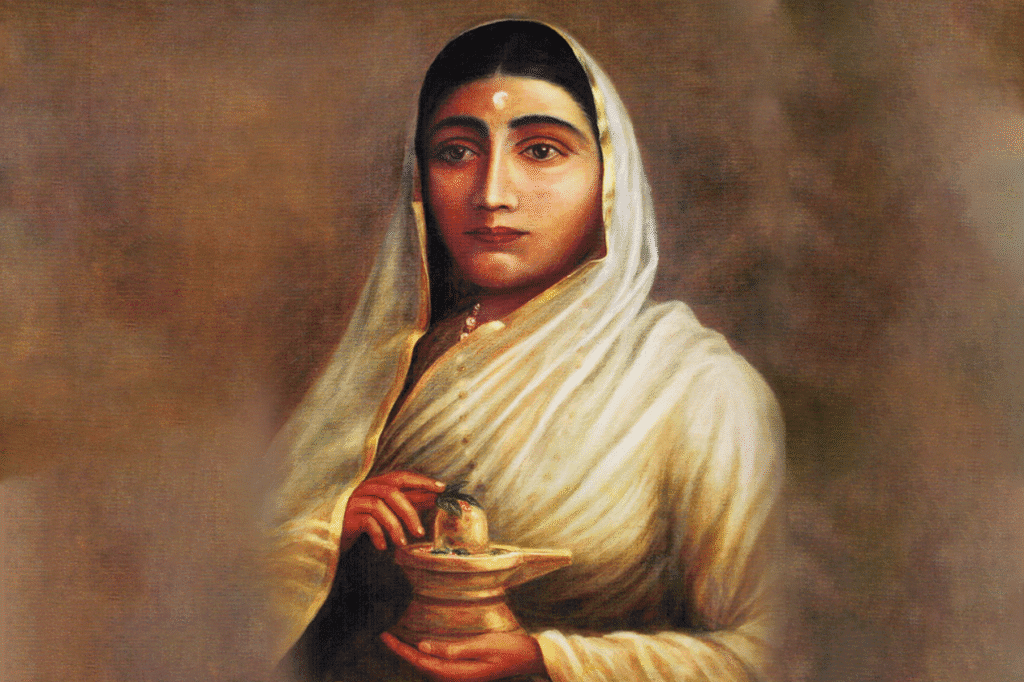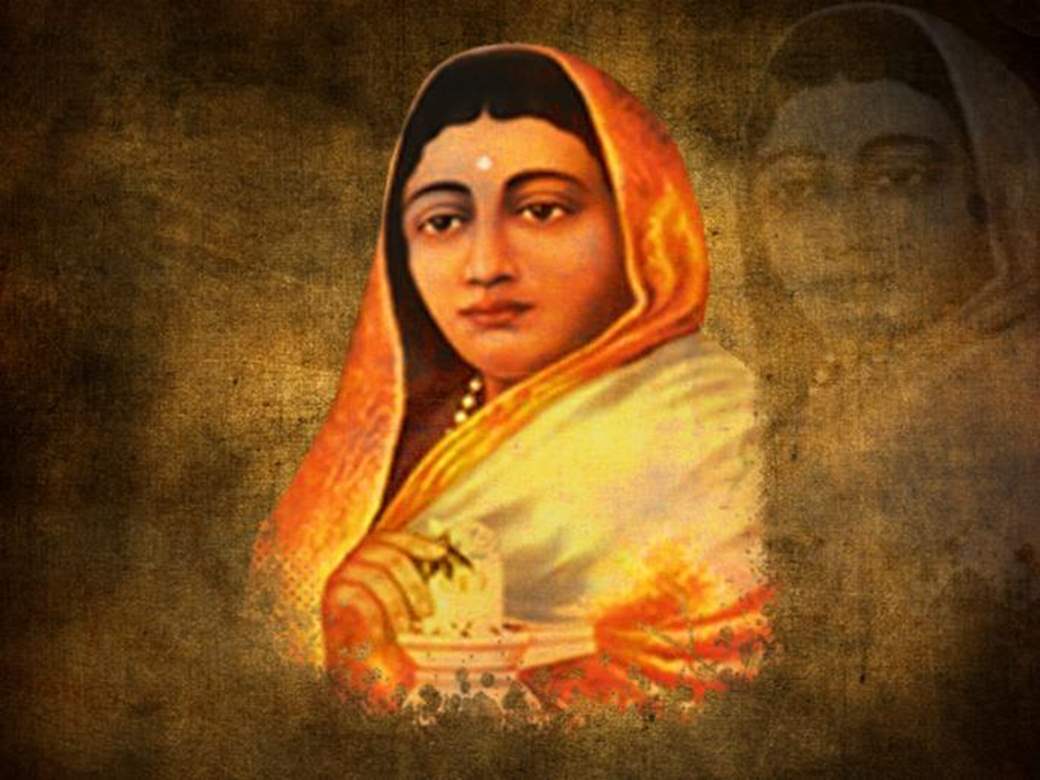Maharani Ahilyabai Holkar (31 May 1725 – 13 August 1795) stands as a rare and brilliant beacon in Indian history. Revered for her compassion, wisdom, administrative excellence, and unwavering devotion to dharma, she transformed the Holkar dynasty into one of the most enlightened and benevolent regimes of the 18th century. Not just a queen but a reformer, warrior, and spiritual leader, Ahilyabai Holkar’s legacy spans architecture, philanthropy, governance, and gender empowerment.
Early Life: Humble Roots of a Great Queen
Ahilyabai was born on 31 May 1725 in the village of Chondi, near Jamkhed in present-day Ahmednagar district, Maharashtra. Her father, Mankoji Shinde, was the Patil (village head) and a member of a respected Dhangar family. Though girls were seldom educated in those days, her father ensured she learned to read and write.

Her destiny changed when Malhar Rao Holkar, the powerful general of the Maratha Empire and ruler of Malwa, spotted her at a temple in Chondi. Impressed by her devotion and demeanor, he selected her as the bride for his son, Khanderao Holkar. At just eight years old, Ahilyabai was married and brought to the Holkar household in Indore.
Tragedy and Transformation
Ahilyabai’s life was marked by personal tragedies. Her husband Khanderao died in 1754 during the Siege of Kumher, struck by a cannonball while inspecting his troops. Grief-stricken, she resolved to perform sati, but her father-in-law Malhar Rao persuaded her against it, urging her to take up responsibilities as his spiritual and political heir.
In 1766, Malhar Rao passed away. Her only son, Malerao Holkar, briefly ruled but died in 1767 due to mental illness. With no male heir and a vulnerable kingdom, Ahilyabai stepped in, eventually becoming the ruling queen (Rajmata) of the Holkar dynasty.
A Queen Like No Other
Ahilyabai Holkar’s reign from 1767 to 1795 is considered a golden era in the Malwa region. Known for her wisdom, justice, and inclusiveness, she personally led military campaigns, issued edicts, handled finances, and heard petitions from commoners. She balanced strength with compassion, and her court became a model of efficient, ethical governance.
Military Prowess
She was not just a ruler but a warrior. Her leadership repelled invasions and crushed rebellions, particularly during a time when the Maratha Confederacy was still reeling from the Third Battle of Panipat (1761). Her trusted general and brother-in-law, Tukoji Rao Holkar, assisted her in military affairs.
Religious and Cultural Contributions
One of her most celebrated legacies lies in her massive patronage of Hindu temples, ghats, and pilgrim shelters across India. Ahilyabai built or renovated temples in:
- Kashi Vishwanath, Varanasi
- Somnath in Gujarat
- Gauri Somnath Mandir at Omkareshwar
- Dashashwamedh Ghat in Varanasi
- Rameswaram, Dwarka, Mathura, Ayodhya, and more
Her contributions were not limited to her state. She dispatched funds from her personal wealth, not public treasury, to revive ancient pilgrimage sites that had been plundered during centuries of invasions.
Her charitable works also included construction of Dharmshalas (pilgrims’ rest houses), ghats, and wells across India, making her the patron queen of Hindu dharma.
Administration and Governance
Ahilyabai’s governance style combined spiritual ethics with practical administration. She held open court daily, ensuring justice was swift and fair. Her policies emphasized:
- No discrimination based on caste or religion
- Promoting agriculture, commerce, and trade
- Building roads, forts, schools, and temples
- Funding education and religious studies
She ran the Holkar dynasty as a true servant-leader. In her words, “It is my duty to serve my people, and I am their mother.”
Empowerment of Women and Social Reform
Ahilyabai Holkar’s reign defied gender norms of the time. As a widow and a woman in power, she:
- Refused sati and set a public example
- Chose to rule with strength and dignity
- Encouraged education among girls
- Married her daughter Muktabai to a brave but poor man, breaking social class barriers
Her life became a beacon for female leadership and moral courage, remembered even today in India’s feminist discourse.
Legacy and Memorials
Ahilyabai Holkar passed away on 13 August 1795 at the age of 70. Her death marked the end of a golden chapter in Maratha history. But her legacy remains deeply rooted in India’s cultural and spiritual consciousness.
Institutions Named After Her:
- Devi Ahilya Vishwavidyalaya, Indore
- Devi Ahilya Bai Holkar Airport, Indore
- Statues and memorials in Maheshwar, Indore, and Varanasi
- Postage stamp issued in 1996 by the Government of India
Her palace, Rajwada in Indore, and Fort of Maheshwar still stand today, attracting historians and pilgrims alike.
Charities and Jyotirlinga Endowments
Ahilyabai Holkar made significant donations to 12 Jyotirlinga temples, the most sacred sites of Lord Shiva worship. Some notable contributions include:
| Jyotirlinga | Location | Contributions |
|---|---|---|
| Somnath | Gujarat | Reinstallation of idol, 1786 |
| Mallikarjuna | Andhra Pradesh | Temple construction |
| Omkareshwar | Madhya Pradesh | Silver idols, drum house, flower garden |
| Vaijnath | Maharashtra | Temple rebuilt in 1784 |
| Nagnath | Maharashtra | Annual grants for worship |
These initiatives weren’t just religious—they were acts of national cultural restoration, rebuilding India’s spiritual centers during a time of political instability.
Conclusion: Why Ahilyabai Holkar Still Matters
Ahilyabai Holkar was more than a ruler—she was a civilization builder. Her wisdom, vision, and sense of duty turned a vulnerable kingdom into a stronghold of culture and spirituality. In an era when women rarely held power, she ruled with unmatched grace and strength, becoming an eternal symbol of Bharatiya nari shakti (Indian woman power).
She left behind a legacy not of conquest, but of compassion, culture, and contribution—a legacy India continues to celebrate and draw inspiration from.
Read More : https://sanglidistrict.in/
Read this : https://kolhapurdistrict.in/
Rad This : https://sataradistrict.in/


